Day 1 :
Keynote Forum
Jeff Burgess
Director of Oral Care Research Associates, USA
Keynote: The importance of Salivary Assessment in Dental Practice
Time : 08:45-09:15
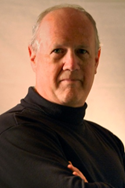
Biography:
Jeff Burgess received his DDS and MSD from the c, in Seattle. He practiced general dentistry for 10 years and returned to the UW to pursue an MSD in Oral Medicine followed by a two year post-doctoral fellowship in the Department of Anesthesiology at the University Medical Center. He subsequently served 15 years as a Consultant and Attending at the Medical Center Pain Center and at the same time was a Research and Clinical Research Assistant Professor in the Department of Oral Medicine. He also saw patients in a private Oral Medicine practice for 18 years. He is board certified in Oral Medicine and has been a co-investigator on numerous studies and authored and co-authored multiple chapters in Medical and Dental texts as well as articles in peer-reviewed journals and for Web MD (Reference Section) and Pennwell. He is the Director of Oral Care Research Associates and recently completed studies related to dry mouth.
Abstract:
Because of product advertisement related to dry mouth products, Dentists and hygienists are becoming more often than not the health care providers that are consulted for problems involving salivation. Research suggests that dry mouth, a common malady, is particularly distressing to patients and can significantly impact quality of life. As Dental providers, we know that excessive dry mouth, also termed Xerostomia, can cause oral discomfort and sleep disturbance and increase caries susceptibility and periodontal disease. Xerostomia may be the result of medication use or caused by systemic disease. But the complaint of dry mouth does not always correlate with actual dry mouth, an important factor that must be considered in dental treatment planning, systemic disease identification, and dental disease prevention. Thus, for cases involving complaint of dry mouth, knowing what constitutes adequate salivary flow and its assessment must be an important component of the patient’s dental evaluation.This lecture will briefly discuss: 1. the medical problems that can contribute to a perception of dry mouth or cause Xerostomia; 2. how to clinically evaluate the salivary glands; 3. how to measure salivary flow to determine if there is insufficient salivation; 4. and the new innovative management strategies and OTC products that can be helpful in reducing day time and night time dry mouth.
Keynote Forum
Curtis Westersund
University of Alberta in Edmonton, Alberta
Keynote: The “Physiology of Occlusionâ€
Time : 09:15-09:45

Biography:
Curtis Westersund earned his DDS from University of Alberta in Edmonton, Alberta in 1979. He practiced as a General Dentist in the city of Calgary in the province Alberta Canada for 37 years. His practice is focused on the treatment of Temporo Mandibular Disorders (TMD) with a physiologic approach to diagnosis and treatment. He holds a Mastership with the International College of Cranio-Mandibular Orthopedics (ICCMO). He has published in the scientific journal CRANIO, The Journal of Craniomandibular & Sleep Practice, for a clinical trial on the effects of postural alignment on dental occlusion. He has been published in the Handbook of Research on Computerized Occlusal Analysis in Dental Medicine, and the book Body Mechanics Handbook about use of physiologic and biometric protocols in the treatment of TMD. He has lectured on the treatment of TMD using physiologic and biometric principles throughout the United States, Russia, Europe, Japan, India, Brazil and Canada. He acted as an expert witness for dentists in both Alberta and British Columbia.
Abstract:
When a patient starts to suffer from chronic pain, it has a significant impact on their lives and it takes a lot of energy to try and function when they are in chronic pain. Many patients will see their medical doctor seeking relief, but often their pain is not medical in origin, but instead is a functional problem and it needs a functional and physiologic solution. The balance and function of the body needs to be restored. Through incorporating physiologic and biometric protocols in the diagnosis and treatment of the TMD into your practice, you will assist not only your patient but you will provide a valuable and much sought service to your community. In this presentation you will learn: 1) Malocclusion and TMD: How many of you’re patients have or will end up with TMD problems? 2) How can understanding the physiology created by a malocclusion alter your approach to helping both patients of record as well as patient referrals from medical doctors, lawyers and even other dentists. 3) TMD is not limited to the 2 inches around the TMJ. Discover the structural, muscular, neural and physiologic affects of TMD on the head, neck and body. 4) TMD is related to two problems: the mandible in the wrong place and the occlusion is unbalanced. By using biometric tools such as ULF TENS and Tscan, the treatment of TMD can be predictable, simple and effective. Learn an easy to follow protocol you can integrate into your own office. 5) Bring your team. The business of treating TMD starts with the first phone call into the office, the hygiene appointment conversations and the discussion with the patient after the dentist has left the operatory. Team involvement makes all the difference in your service to your patients.
Keynote Forum
Susan Cushing
DMD, Pocasset, Mass, USA
Keynote: Dental Anxiety & Dental Phobia
Time : 09:45-10:15

Biography:
Dr. Cushing has been a practicing dentist for over 34 years. She is a graduate of Boston College and Tufts University Dental School. She is a Fellow in the International College of Dentists and a Master in the Academy of General Dentistry. Dr Cushing practices all phases of dentistry with an emphasis on treating fearful and phobic dental patients.She is also a Clinical Hypnotherapist and a Master Practitioner of Neuroâ€Linguistic Programming, helping others reâ€program their own thoughts, actions and behaviors, in order to enhance the quality and effectiveness of their lives.
Dr.Cushing volunteers at the Friends of Falmouth Dog shelter, CCDART, The Samaritans and other community service organizations. She resides on Cape Cod with her husband, Curt Miller. Her most recent book is "Have No Fear of the Dental Chair!" A Guide for Reducing Dental Anxiety".
Abstract:
Dental anxiety in children and adults is keeping 30-40 million Americans from seeking needed dental care. Statistics show a range of 15-40% of people that have some level of dental anxiety, whereby limiting their getting regular dental treatment and only getting sporadic emergency care. This dental fear that haunts so many people will not allow them to sit comfortably in a dental chair. My personal experience and research has shown that both dental anxiety and the more severe form called Dental Phobia is keeping many of them from having the dental care necessary to maintain their health, appearance and overall quality of their lives. Treating these patients can be quite challenging and frustrating to many dentists, especially those unprepared and untrained to handle them. After over 34 years of working with this particular group of patients, I have learned an assortment of skills and methods to not only get most of them into a dental office, but to also give them the tools they need to act calmly in a dental chair, get their dental needs accomplished, improve their health and appearance and boost their self-esteem. My book: “Have No Fear of The Dental Chair”, is a guide written to provide both fearful patients and dental professionals with valuable and proven insights and methods.
- Oral and Maxillofacial Surgery| Endodontics| Restorative Dentistry| Periodontics| Orofacial Myofunctional therapy in dental practice
Location: Hampton Event Centre A

Chair
Curtis Westersund
University of Alberta in Edmonton, Alberta

Co-Chair
Susan Cushing
DMD, Pocasset, Mass, USA
Session Introduction
Eliana Rossini Ribeiro
CEO, Rossini Health and Esthetic, Brazil
Title: Hyaluronic acid filler as an ally on orthodontic cases
Time : 12:00-12:30

Biography:
Dr Eliana Rossini Ribeiro is a Doctor of Dental Surgery, specialized in Orthodontics and Pediatric Dentistry.MBA in marketing and several courses in the area of Facial Aesthetic.Started her studies in orofacial harmonization when realized that even after the orthodontic dental correction was completed, patients often shown facial disharmony due to maxilary-mandibular complex. Improved knowledge in order to fill this crucial gap for the satisfaction of her patients. As a result, the demand for more aesthetics procedures increased on her clinical routine, such as applications of hyaluronic acid with different purposes, botulinum toxin and also treatments for rejuvenation and skin stains with PRF (Platelet Rich Fibrin).
Abstract:
The hyaluronic acid is a naturally produced substance present in the human body, filling spaces between the cells and keeping the skin smooth, elastic and hydrated. It has many functions, including the replacement of lost tissue due to aging and the volumizing effect of different facial structures, minimizing asymmetries. Another use for the hyaluronic acid is to complement orthodontic cases, in order to minimize facial disharmonies especially on surgical cases. Patients are not always prepared psychologically or financially to do a surgical procedure, and it demands a long time for total recovery. Two clinical cases will be presented: 1) 46-year-old patient unhappy with her facial disharmony due to Angle Class II malocclusion; decided not to perform the orthognathic surgery, and wanted to minimize malocclusion effects on her appearance. It was proposed a treatment with hyaluronic acid filler in the mentolabial furrow, to minimize the depth aspect of the region and the disharmony on the lower lip. 2) 25-year-old patient, under orthodontic treatment for anterior teeth crowding. Class I occlusion; Class II profile features caused by a lower growth and development of the chin. In this case, the application of hyaluronic acid was made on the anterior part of the chin aiming at a esthetic and proportional facial profile.
Simone Sattler Pinheiro
CEO, Odonto Faciale School, Brazil
Title: Dentistry’s treatments with hyaluronic acid for facial fillers
Time : 12:30-13:00

Biography:
Dr. Simone Sattler Pinheiro is a Dental Surgeon, graduated from Fluminense Federal University (UFF), postgraduate in Functional Jaw Orthopedics and Pediatric Orthodontics from APCD (SP) and postgraduate in Orthodontics from Unigranrio University (RJ). Furthermore, is founder of OdontoFaciale School, where also teaches. Has 22 years of professional and clinical experience in dental office in the aesthetic area. Invited Speaker of InnovaPharma. Trained in Facial Lifting, Botulinum Toxin and Facial Fillers by Nicholson Center Hospital - USA. Trained in Orofacial Harmonization with emphasis on Botulinum Toxin, Facial Filling Materials and Phototherapy - REO Group. Member of the Brazilian Academy of Orofacial Aesthetics (ABEO) and member of the Brazilian Society of Botulinum Toxin and Facial Implants (SBTI). Professor of Postgraduation Degree at Unigranrio University.
Abstract:
Dr. Sattler is a Doctor of Dental Surgery, specialized in oral orthodontics and maxillofacial surgery. Has always studied a great deal about craniometric, cephalometrics, skeletal discrepancies and facial analysis. In modern treatment, increasingly aesthetics and function complement in order to offer always the best to the patient. Absorbable facial fillers have become an excellent option to reduce facial imperfections, whether they are thin lips, maxillary or mandibular hypotrophy, nasal labial angle below 90°, slightly prominent zygomatic, among others. These can also be used to attenuate wrinkles expression, giving a young look to the face. The dentist is a professional who has sufficient knowledge to apply these treatments and evaluate the vertical dimension, occlusion and whole facial set to give a pleasing result, within the functional pattern and, at the same time, beautiful.Hyaluronic acid is well known to be absorbed by the body, and is widely used in dermatology safely. Moreover, dentistry further aggregates this technique, enabling a more appropriate finalization of orofacial rehabilitation treatments. It promotes a broader aesthetics function as well as a patient-friendly positive feeling.The aim of the presentation will be focused in facial filling techniques and re-anatomization/reconstruction of the face even as some cases already treated.
Simone Sattler Pinheiro
CEO, Odonto Faciale School, Brazil
Title: Dentistry’s treatments with hyaluronic acid for facial fillers
Biography:
Dr. Simone Sattler Pinheiro is a Dental Surgeon, graduated from Fluminense Federal University (UFF), postgraduate in Functional Jaw Orthopedics and Pediatric Orthodontics from APCD (SP) and postgraduate in Orthodontics from Unigranrio University (RJ). Furthermore, is founder of OdontoFaciale School, where also teaches. Has 22 years of professional and clinical experience in dental office in the aesthetic area. Invited Speaker of InnovaPharma. Trained in Facial Lifting, Botulinum Toxin and Facial Fillers by Nicholson Center Hospital - USA. Trained in Orofacial Harmonization with emphasis on Botulinum Toxin, Facial Filling Materials and Phototherapy - REO Group. Member of the Brazilian Academy of Orofacial Aesthetics (ABEO) and member of the Brazilian Society of Botulinum Toxin and Facial Implants (SBTI). Professor of Postgraduation Degree at Unigranrio University.
Abstract:
Miguel Angelo Sattler Pinheiro
São Leopoldo Mandic University, Brazil
Title: New perspectives on immediate implants using custom provisional healer
Time : 14:30-15:00
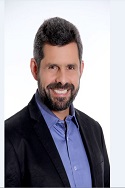
Biography:
He is currently professor at the Post-Graduate Program at the Dentistry College of Campos – Rio de Janeiro Brazil.Master in Oral Implants by São Leopoldo Mandic University. He is a Dental Surgeon, specialist in Dental Implants. He was professor of the Graduate Program at the Dentistry College of Campos – Rio de Janeiro Brazil for 8 years. 2000–2008. He has been the co-author of a total dentures book. He was member of the Brazilian institute of Dental implantology. 1998-2007
Abstract:
Dr. Miguel Sattler is a Dental Surgeon, specialist in Dental Implants, by the Brazilian Institute of Implant Dentistry, specialist in Oral Rehabilitation and Master in Oral Implants by São Leopoldo Mandic University. With more than 24 years of experience in the areas of Rehabilitation and Oral Implants, he has always sought scientifically to develop and improve modern and innovative techniques, restoring patients' aesthetics and function. The technological advancement of the geometry and surface of the implants and the bone graft materials allowed the development of reproducible techniques and favorable prognosis for immediate implantation in post-extraction alveoli, associating immediate loading and or immediate personalized healing. Keeping this way the natural architecture of the lost tooth and avoiding loss of volume and tissue structure. Being well indicated and using complementary surgical techniques, it is possible to solve the majority of cases of missing teeth, with implantation and immediate loading, thus becoming a highly predictable, faster and more comfortable resource for the patient, besides aesthetics satisfaction.
Radwa M A Eldessouky
Tanta University, Egypt
Title: Five tips to consider before planning esthetic laminate veneers
Time : 15:00-15:30

Biography:
Radwa M A Eldessouky has completed her MD at the Fixed Prosthodontics, Conservative Dentistry & Endodontic Departments, School of Dentistry, Tanta University and Postdoctoral studies from Stanford University School of Medicine. She is serving as an Editorial Board Member of Journal of Oral Medicine and Toxicology.
Abstract:
Over the last decade, laminate veneers have attracted attention of both dentists and patients as a conservative method for treatment of esthetic and functional problems in anterior region of oral cavity. A wide range of durable esthetic restorative materials are now available on market for fabrication of laminate veneers including; ceramics, ceramic like and composite with both direct and indirect technique. Different philosophies of teeth preparation are also still open to debate ranging from no or minimal preparation to over-reduction. Depending on the case and the desired esthetic results, the clinicians can provide a wide range of treatment modalities and be able to choose the appropriate one according to clinical situations. The current article was reviewed to search for the ideal restorative material together with the appropriate tooth preparation philosophy indicated in various clinical scenarios to reach the long-term success of dental veneers.
Paula Pinheiro de Abreu
Faculdade de Odontologia UNESP, Brazil
Title: Why dentists will never be replaced by technology?
Time : 15:30-16:00

Biography:
Paula Pinheiro de Abreu, of Radiologia Odontologica Abreu , dentist graduated in State University of São Paulo (UNESP São José dos Campos) and with expertise in Radiology in University of São Paulo (USP).
Abstract:
In 1895 Human discovered how to see inside our body without surgery. The X-ray was one of the most powerful tools of diagnose revolution and technology became the name of progress. Modernity brought us increased life expectancy and search for quality. Odontology is changing and shows us new techniques and better materials every day. We don’t want just health, but especially aesthetics, because Men and specially Women want to be beautiful forever!But all these changing afraid us in the way it is starting to replacing humans in some functions and even professions! But we shouldn’t be worried, because it is not going to happening with us. It is because Dentists use one thing machines will never have: Human Skills.In ten years of working and observing patients and dentists being a radiologist, I realize that courses and practice is essential to be in the game, but not to win the game. I find out that being a good doctor is much more than have a beautiful office, a wall full of course certificates or expensive equipment.Me and my co-workers are Always testing! We apply, make some mistakes, change, test again untill we see transforming results. So simple, but not easy to do. Let’s find which are these wonderful skills that help us to make the odontological treatment the best experience of the world.
Simone de Lucas
Professor of Bichectomy. Surgery for Dentists, Brazil Professor of Bichectomy. Surgery for Dentists, Brazil
Title: Bichectomy: A small and simple intraoral surgical procedure with great facial results
Time : 16:15-16:45

Biography:
Dr Simone de Lucas is a Doctor of Dental Surgery, graduated in dentistry school for 23 years for Universidade de Mogi das Cruzes (UMC- SP, Brazil). She is member of the Brazilian society of Botulinum Facial Implants and Member of Brazilian Academy of Orolfacial Aesthetics. Dr Simone is national reference in Bichectomy.Post-graduate courses in Butolinicum toxin; Facial fillers and Bichectomy in carried out fresh human cadavers (Miami Anatomical Reserch Center- MARC, Miami US).Also post-graduate in Brazil in Implantology; Oral and Maxilo hospital monitoring; Bichectomy; Butolinicum toxin and Fillers; Laser; Venipuncture and Derma Roller with application of Platelet Rich Fibrin (PRF) for Skin Rejuvenation and Dental marketing management.Currently she teaches Bichectomy in Instituto Brasileiro de Odontologia e Pesquisa (IBOP), Faculdade do Centro Oeste Pinelli Henriques (FACOPH).
Abstract:
Nowadays Bichectomy is the esthetic facial procedure most frequently performed surgery in countries like Brazil, USA,Japan, Venezuela and Mexico.The procedure described had been around since 1980, the technique became very popular thanks to social media.This technique consists of the intraoral elimination of an encapsulated adipose tissue (Bichat’s fat pad). It is located within the face between two muscles. When it is removed, the effect is discreet, yet provides the desired “The Blush Mark”.This procedure is for both men and women, even with ideal weight present and have existing big cheeks and round face. The intention is lengthen, outline, and establish facial contours providing gains on self-esteem.Bichectomy is also indicated to treat facial asymmetries and for patients that bite the inside of their cheeks.In facial harmonization, the bichectomy is value procedure, since it provides as marked and dominant mandible, as well as powerful and sensual impression, which are highly valued characteristics.
Dr. Lucas will address the following topics:
How happens the facial aging signswho are ideal patients for BichectomyShe will show the final results, as well as the success techniques used for more than 150 patients in Brazil.In addition, Dr. Lucas will discuss topics like accidents, complications, risks, and occurrences.Dr. Lucas will answer questions about treatments, medical and therapeutic protocol, and post-operation.
Paulo Roberto Lisa Sanchez
Scientific Advisor of the Brasilian Academy of Integrative and Regenerative Medicine, Brazil
Title: Dr. Sanchez curettes for root decontamination
Time : 16:45-17:15
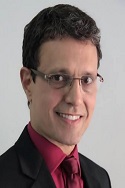
Biography:
My Doctoral is from São Paulo UniversityI'm traceje in APCD Associação Paulista dos Cirurgiões Dentistas de São PauloRegional de Bragança Paulista. Bragança is a city near São Paulo. I'm Teacher in Botox and PRP too.
Abstract:
The root concavities represent an important anatomical characteristic. In the regions of the middle thirds of dental roots are the greater widths and depths of the concavities.There are also the richest areas in periodontal ligament, representing the fulcrum of the teeth. Between 4 and 6 mm, on average for all human teeth, is the middle third.From 4mm,you can find the furcation, that is, at the beginning of the middle third of the root, you can also start a bifurcation. In addition, clinically, when we performed the probing, when we reached 4mm in the analysis of insertion loss, we can use this measurement as reference for a diagnosis of furcation lesion. All these characteristics call attention to the need for periodontal instruments that adapt more adequately to the root. Existing instruments, while effective in a certain way, do not have the appropriate design for the treatment these regions. they are very useful for anatomical regions convex or almost flat, but not for the concave. It is important to emphasize that without the correct root decontamination, we perpetuate, mainly in the concavities, a niche of bacterial deposit. Thus, the process of loss of the dental element is potentiated and in the course of this process, the risks of chronic degenerative diseases related periodontitis. It is Periodontal Medicine in evidence. Therefore, after a critical analysis of this question, by studying the research line of the University of Sao Paulo, of which my Masters and Doctoral these were part, I developed a curettes Kit. These instruments are unpublished and of excellent application, both for the clinician and for the specialist. The active parts of the curettes have a drawing, which facilitates the adaptation of the same to the concavities of the dental roots, by medial and distal, especially in the middle thirds, considerably improving root decontamination during the escaping procedure. They may also be used, in regions of root trunks, furcation or at the clinical criterion.
Mohannad El Akabawi
Misr University for Science and Technology, Egypt
Title: Esthetic and surgical treatment using diode laser
Time : 17:15-17:45

Biography:
Abstract:
Shirlei Devesa
CEO, Dental Esthetic Clinic, Brazil
Title: The use of botulinum toxin and facial fillers in orthodontic surgical patients
Time : 17:45-18:15

Biography:
Abstract:
- Oral Implantology| Prosthodontics| Cosmetic Dentistry| Pediatric Dentistry| Dental Marketing
Location: Hampton Event Centre A

Chair
Israel Ismaj
Diplomate American Dental Association, USA
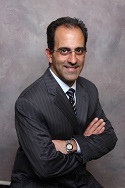
Co-Chair
Armen Mardirossian
Diplomate, American Board of Periodontology, USA
Session Introduction
Cristiano Bellico de Paiva
CEO, Outbox School, Brazil
Title: Platelet rich fibrin for skin rejuvenation
Time : 10:00-10:30
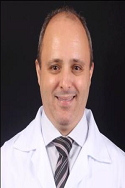
Biography:
Cristiano Bellico de Paiva is a Doctor of Dental Surgery, specialized in Implatology, Forensic Dentist and Prosthetic Dentist. He also did a course in Oral Microsurgery, Laser Therapy, MBA in Marketing and several courses in the area of facial aesthetics. A few years ago he started studying aesthetics and facial function with the concept of orofacial harmonization
Abstract:
Andre Luiz de Oliveira
CEO, Outbox School, Brazil
Title: The five steps concept: A new approach in orofacial harmonization
Time : 10:45-11:15

Biography:
Abstract:
Adriane Roim Vanni
Minister of Botulinum Toxin Training and Facial Fill for dentists, Brazil
Title: The use of botulinum toxin type A, to smooth and harmonize the lip of border line patients with vertical maxillary excess and consequent gingival smile
Time : 11:15-11:45

Biography:
Abstract:
PatrÃcia Guedes Maciel Vieira
University teacher School, Thoppi, Brazil
Title: Rinomodeling with hyaluronic acid
Time : 11:45-12:15
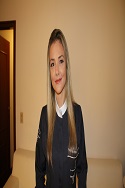
Biography:
Abstract:
Eduardo Antônio de Castro Vieira
University teacher School Thoppi, Brazil
Title: Title: Fixed prosthesis on implants with gingival preservation
Time : 12:15-12:45

Biography:
Eduardo Antonio de Castro Vieira, Unincor University School of Odontology, Belo Horizonte, Brazil Master in Materials Engineering UFOPMG, Specialist in Prosthesis by UNICAMP-SP, Specialist in Teaching Higher Education, Qualified in Laser Therapy, Professor of Graduate and Post Graduation of UNINCOR University, professor of Post-Graduation in Prosthodontics and Implantology of ABO Belo Horizonte. Clinical in private practice
Abstract:
Engie Mohamed Moustafa Safwat
National Research Centre, Egypt
Title: Preparation of mineralized nanocellulose hydrogel from some local agricultural residues and assessment of their viability for use in osseous regeneration: An in vitro study
Time : 15:00-15:30

